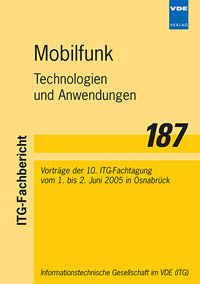Influences of Rectangular Dielectric Structures on the Radiation Pattern and the Gain of Circular Aperture Antennas
Konferenz: Mobilfunk - Technologien und Anwendungen - 10. ITG-Fachtagung
01.06.2005 - 02.06.2005 in Osnabrück, Deutschland
Tagungsband: Mobilfunk - Technologien und Anwendungen
Seiten: 7Sprache: EnglischTyp: PDF
Persönliche VDE-Mitglieder erhalten auf diesen Artikel 10% Rabatt
Autoren:
Collmann, Ralf R.; Zieschang, René (HTW Dresden (FH) Fachbereich Elektrotechnik, Friedrich-List-Platz 1, 01069 Dresden, Germany)
Neske, Hans-Klaus (TeleCommunikation Services TCS, Julius-Otto-Str. 3, 01219 Dresden, Germany)
Inhalt:
The influence of rectangular dielectric structures in front of circular apertures is examined. Attention is paid especially to predicted radiation patterns and the effect of the dielectric structures on the antenna gain. An improved one-dimensional integration process based on the overlapping subaperture method is proposed. This integration process is used by a simulation program for calculating the influences of the dielectric structure. The influence of those dielectric structures has been considered as amplitude and phase deviations in the field distribution of the plane, circular aperture. Two approaches, a straight forward approach based on a simple model in aperture plane and a more sophisticated approach taking into account the diffraction effects of the rectangular dielectric structures are proposed. Using these approaches allow computation of the field distribution in the near and far field of the aperture antenna. The near field simulation results had been verified with indoor measurements in the near field with the same distance. Equations to describe the radiation pattern of a reflector antenna with uniform aperture field distribution and rectangular or trapezoidal sub-sections with amplitude and phase deviations are presented. The results achieved with those equations are compared with numerical results based on the overlapping subaperture method for the antenna far field. The proposed methods are not only limited to circular apertures but can be applied to any kind of plane aperture.


